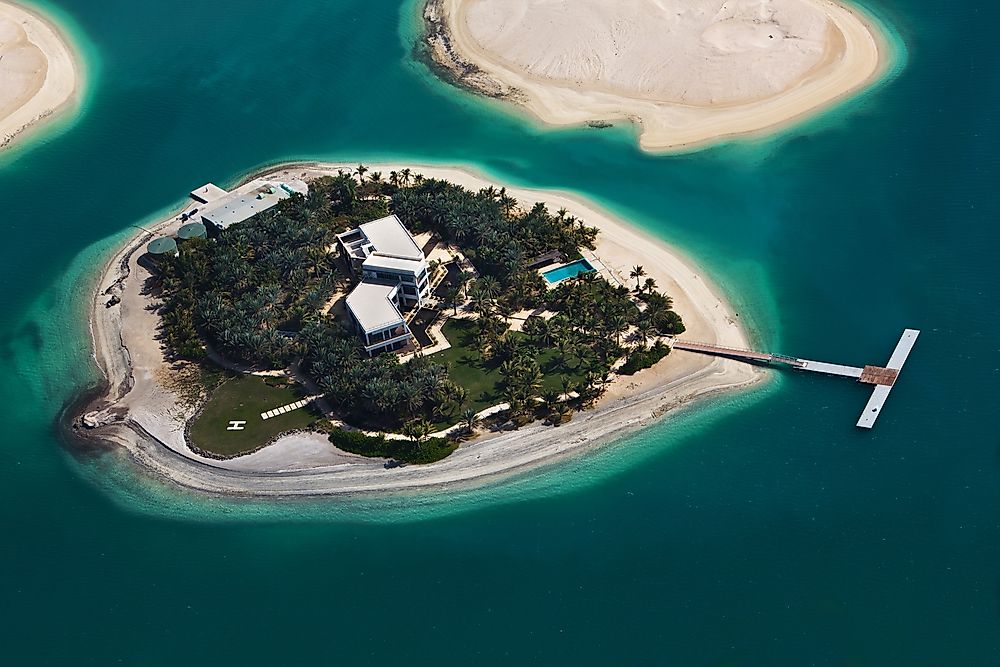The Newest Islands on Earth

Many people think that islands, just like many other geographical features, came to be a long time ago, before modern history. However, weather patterns, natural occurrences, and human activity has led to the formation of several islands, most being in the twentieth century. Most notable man-made islands are in the United Arab Emirates. The islands on this list formed through erosion, volcanism, glacial retreat, or other natural mechanisms. Since the early 1900s, there have been approximately 25 new islands, but this list covers those formed between 2013 and 2017.
Shelly Island (2017)
The sandy Shelly Island is a barrier island that began forming around April 2017 along the Outer Banks of North Carolina Cape Point’s tip. Originally, the island measured a mile long and 500 feet wide but greatly reduced after Hurricane Maria. The Graveyard of the Atlantic surrounds Shelly Island which lies near Hatteras Island. Shelly is under the jurisdiction of Dare County, North Carolina, although, if it merges with Hatteras Island, it will fall under federal jurisdiction. Shelly, nicknamed because of the vast quantities of shells along its shores, formed rapidly, probably through a high tide or storm-driven water (or both) that added sediments to the area after which the water levels receded thus forming the island.
Hunga Tonga-Hunga Haʻapai (2009, 2014-2015)
Hunga Tonga-Hunga Haʻapai are two adjacent volcanic islands that are approximately nineteen miles south-southeast of the Falcon Island in Tonga. The two islands are within the active Tonga-Kermadec Islands volcanic arc, 62 miles directly above an active seismic area, and therefore, magma from different tectonic plates melted and forced the rocks above to the surface to form these islands. These tectonic plates are the Indo-Australian Plate and the Pacific Plate. Both islands add up to about 0.40 square miles in area and formed as early as 1616 although significant addition happened in 2009, then afterwards in 2014 and 2015. Tombolo and sand deposits have since attached the two islands together, although researchers believe that this attachment may be temporary or permanent due to the active volcanic nature of the area.
Jadid Island and the Zubair Group (2013)
Also known as the Al Zubair Group or the Zubayr Group, Zubair consists of ten volcanic islands that are on top of an underlying shield volcano within the Red Sea’s Yemen’s territory. Over history, the islands formed because of explosive and effusive eruptions followed by periods of inactivity that allowed marine erosion to occur. Several submarine eruptions occurred in 2011, 2012, and 2013 leaving vents through which water entered and created Surtseyan activities that released ash plume and steam into the air. The 2013 eruption took place less than 328 feet below the ground and formed the new Jadid Island.
Nishi-no-shima Island (1973-74, 2013-15)
The volcanic island of Nishi-no-shima (Rosario Island) lies 584 miles southeast of Tokyo and forms part of the Volcanic Islands arc. Prior to 1974, the island was a small tip of an underwater caldera but has since enlarged due to the eruptions of 1974, 2013, and 2015 forming volcanic cone with a height of approximately 466 feet, a total area of 667.18 acres, and an additional small island to the southeast of the original island. By late 2016, Japan announced that landing on parts of the island was safe and finally in February 2017, the country declared that there are no signs of an eruption and that the island was safe for visits, however, it erupted in April the same year. Biologists believe that wildlife will soon colonize the island.
How Other New Islands Form
Volcanism is responsible for the formation of most recent islands, however, other natural forces have led to the formation of other islands. For example, Yaya Island in Laptev Sea, Russia, formed from melted ice. In 2013, an earthquake led to the formation of Zalzala Koh (Earthquake Mountain) or Zalzala Jazeera (Earthquake Island) off the coast of Gwadar port in Pakistan. This island, however, disappeared by the end of 2016. Glacial movement and meltdown also detached Uunartoq Qeqertaq Island from the mainland of Liverpool Land between 2002 and 2005. Tigres Island, the largest island in Angola, in the Atlantic Ocean was originally a peninsula and it became an island overnight due to an oceanic storm that separated it from the mainland.











